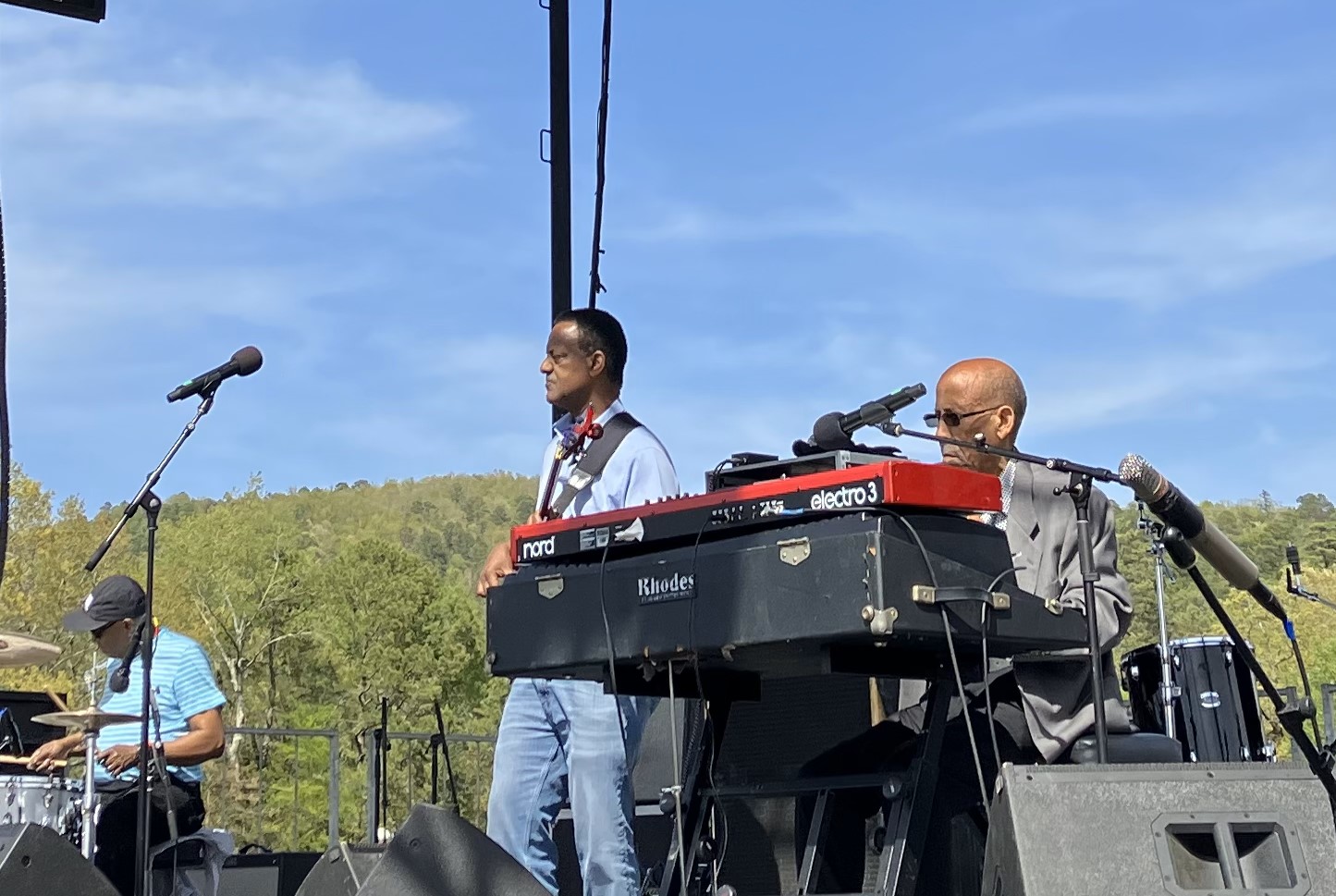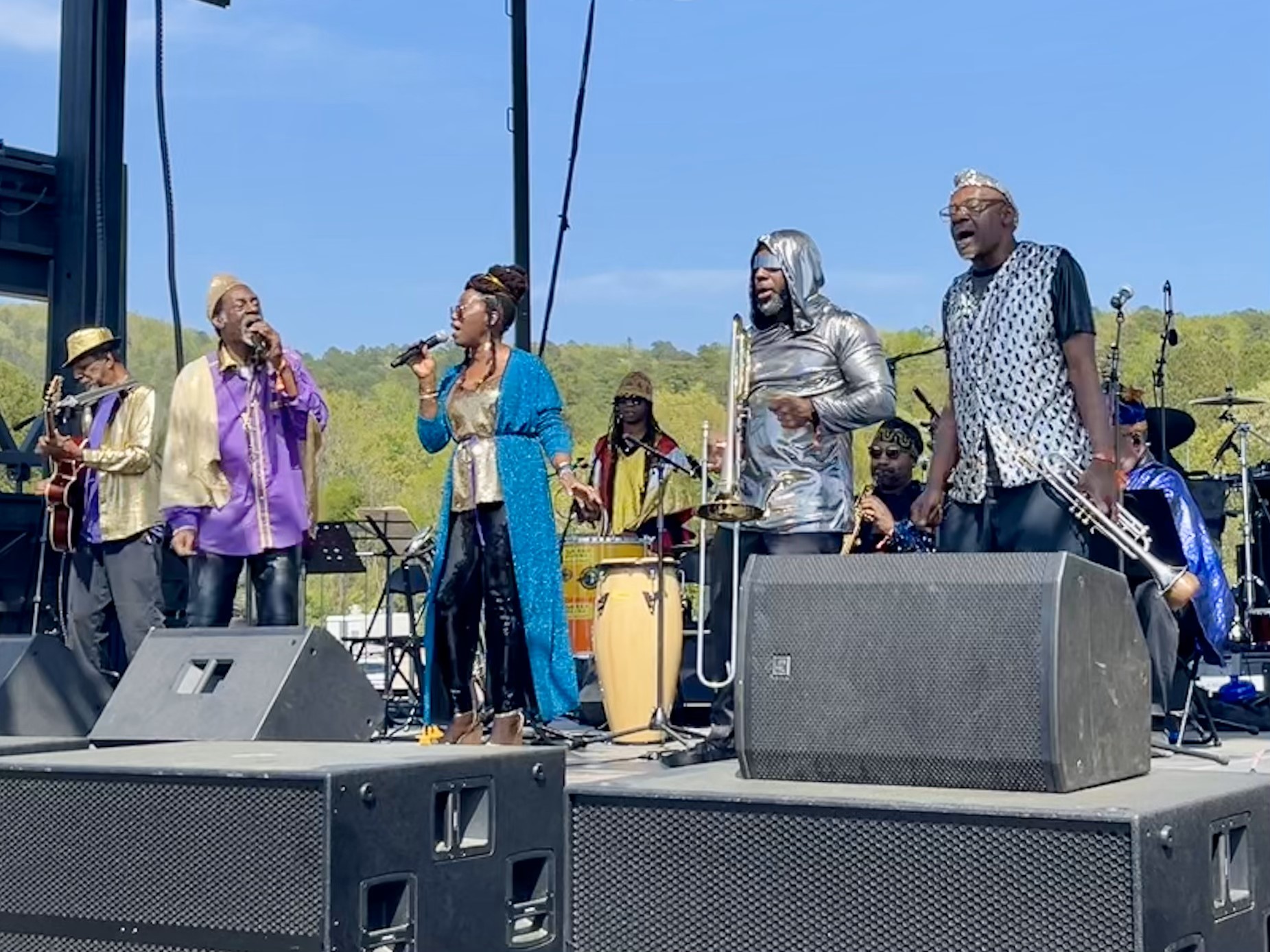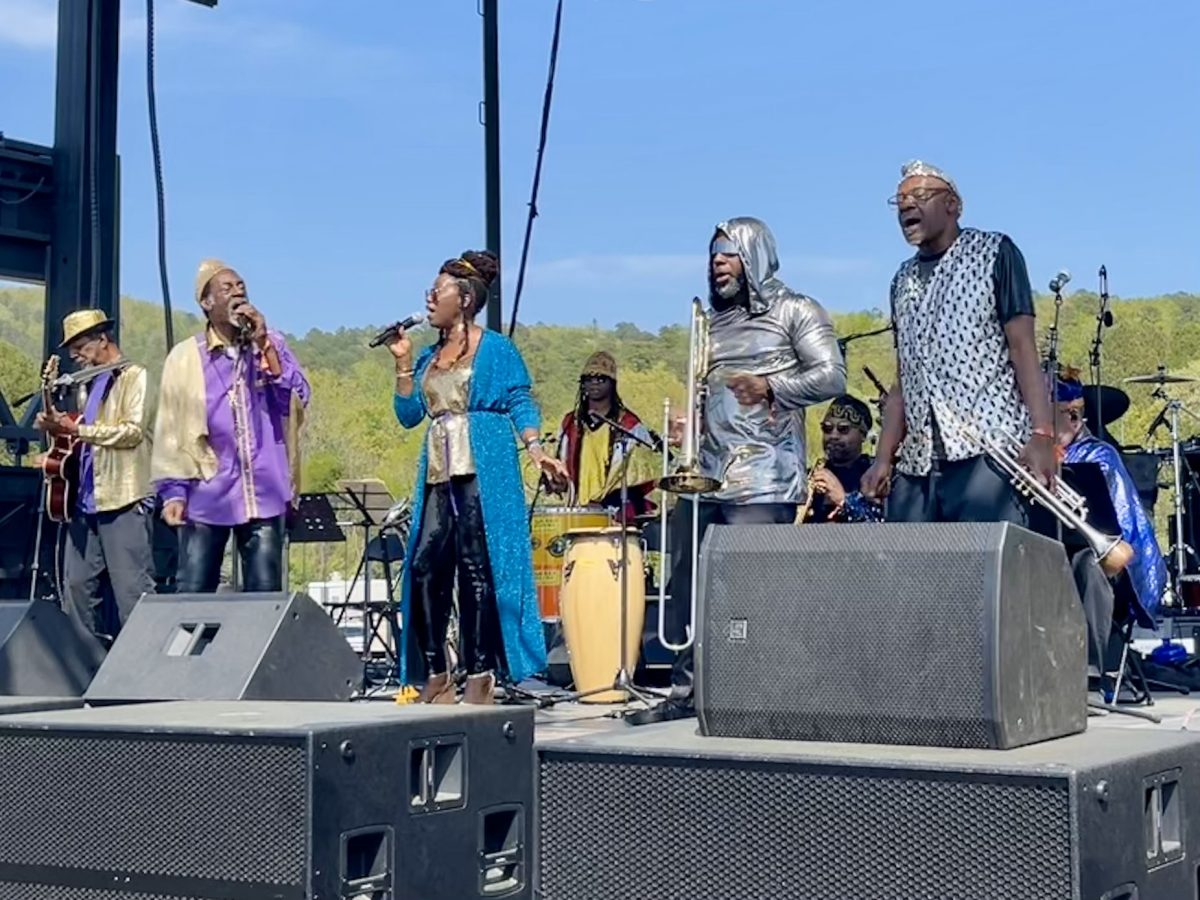“Hopefully all the generators will be turned off,” Quintron opined some weeks before the Ecliptic Festival in Hot Springs, held in the days before and during this week’s total solar eclipse. “And any lighting will be turned off, and all the unnecessary industrial ambient noise that goes along with providing the needs of a festival with thousands of people will be shut down for that period of [totality] so people can really go back a couple thousand years and connect to what we really are, how small we really are.”
And, as it turned out, that was the case once the sun went dark this past Monday. Yet dwelling on the lack of human noise might obscure the fact that this was one ringer of a music festival, co-organized by Hot Springs’ Low Key Arts nonprofit, who for two decades have staged the Valley of the Vapors festival this time every year, and Atlas Obscura, an online magazine and travel company specializing in unusual and obscure destinations.

While this reporter arrived well after the fest’s start date of April 5th, by two days later, on Sunday, there was still an expectant buzz in the air as attendees anticipated the next day’s events. The open meadow atop Cedar Glades Park afforded plenty of room for those stretched out in the blazing sun, or huddled together in the shade of the sound guy’s mixer. And that buzz was well complemented by the first live music of the day, a trio led by Hailu Mergia of Ethiopia. Though his name is unfamiliar to some, his playing brightens many tracks by jazz composer Mulatu Astatke, featured on the popular 2007 compilation, The Very Best of Éthiopiques . As heard in this exclusive video on The Memphis Flyer‘s YouTube channel, the lightly rolling organ and Fender Rhodes piano arpeggios so prevalent in Ethiopian music, backed by a tight rhythm section, helped set the day’s easy-going vibe right out of the gate.
Just before that, I had checked in on Quintron, whose Weather Warlock was set up far from the main stage, in a tent down the hill. Throughout the festival, his sound-generating invention was responding to the everyday shifts in the weather and light, and in the bright blue sky of Sunday it was percolating merrily. Passersby on their way up or down the hill would stop in to hear how the machine was responding to its sensors, most of which (including two spinning in the breeze) sat on a stand capped with a weather vane a few feet away. Other inputs included Quintron’s Wildlife Organ, which used sensors in more distant wild areas. In the video, the inventor explains how one transducer was picking up the creaking of an aged tree limb.
After the funky-yet-calming music of Mergia, and checking out some thought-provoking ideas from speaker Michael Jones McKean, I heard the thumps of a new band getting ready back up the hill. It was ESG, the Bronx’s finest minimalist funk/post-punk pioneers since 1978. Though many years older than when the group was in its heyday, and somewhat infirm, firebrand frontwoman Renee Scroggins could spit chants and rhymes with considerable power and sass, even while seated.
The band’s enthusiasm was part of the show, as Scroggins’ daughter Nicole Nicholas held down those all-important bass lines and son Nicholas Nicholas went from one frenzied percussion part to another, both singing along. Nicole proudly exclaimed that “I’m up here with my mother, my brother, and my aunt [Marie Scroggins, also on percussion and vocals]!” And the camaraderie was palpable. Meanwhile, drummer Mark Giordano was an absolute machine, playing with the precision of an 808 beat and the power of John Bonham. As they played their “U.F.O.,” one of the most sampled tracks in the history of hip hop, brother Nicholas and Aunt Marie donned extraterrestrial masks. “If you see an alien come down,” quipped Nicole, “it’s not an abduction, it’s a rescue mission!”
After ESG’s masterful “Erase You” and a brief encore, Shannon and the Clams were up next. As fans of their 2022 Gonerfest appearance know, their dramatic, soulful harmonies and driving songs of passion, chock full of cinematic guitar hooks and sci-fi organ, were perfect for the Golden Hour.

And then this reporter, having baked in the sun for some hours, valiantly surrendered to exhaustion, though the festival raged on into the pre-eclipse night. No less than the Allah-Las and Fred Armisen presided over the party.
Arriving the next day, just as the moon’s limb was edging into the sun’s brilliant disc, the day began on a dream-like note and stayed there. That was amplified by the ethereal harp music of Mary Lattimore, who runs her ancient instrument through various pedals. The spaciness of those sounds, especially paired with the more sustained notes of accordionist Walt McClements, only added to the mystery of the dimming, silvery light. Meanwhile, a phalanx of small boxes sporting solar panels on one side and a speaker on the other created enigmatic tones as the light shifted and people milled around them.
There were more environmentally interactive tones down the hill, where Quintron continued minding his machine. It was sounding markedly different when I approached just after 1:30. And, with the sun dimming over the next 20-odd minutes, the tones only grew more captivating and rhythmic, complemented by the birds and bugs of Cedar Glades Park.
Quintron didn’t even touch his machine. Instead, we listened to it respond to the dimming of light with a low sinking tone reminiscent of “the Mothership” powering down. A cheer went up as the eclipse reached totality, and I gasped at the sheer breadth of the sun’s corona. Venus and Jupiter flanked the muted orb and its crown like an honor guard, heralds of the day’s second dawn. The world seemed to hold its breath for three and a half minutes. Then, as light returned, the Weather Warlock’s deep bass tone began to rise again, even as the other layers of sound changed in more subtle ways.
It was a powerful moment. Witnessing the incredible coincidence of the moon’s apparent diameter exactly matching that of the sun made me feel lucky to be living in this epoch. After all, the moon is moving away from the earth by an inch every year, and won’t ever completely block the sun’s disc in eons to come.
As the light slowly returned, I wandered back to the performance area, where the Sun Ra Arkestra took the stage. Having played as a group since 1951, they still carry on long after their founder’s death in 1993, led by Marshall Allen, who was there from almost the beginning.

Allen didn’t make the festival, as bassist Tyler Mitchell later explained. About to turn 100 this year, he is in good health, but is picky about his traveling. Knoel Scott, on baritone & alto saxophones, voice, percussion & space dancing, filled in as the musical director, cueing solos and breakdowns with aplomb and launching each incantation.
One standout member of the Arkestra was keyboardist Farid Barron. Doubling on piano and Moog synthesizer as Ra once did, he had some big shoes to fill, but did so with aplomb, elegance, mischief, and humor. Equally capable of erratic chord clusters, synth noise blasts, stride piano, and bluesy ivory-tickling, he was a stylistic tour de force. (As a high schooler, he was discovered by Wynton Marsalis before joining the Arkestra in 2008). Then again, the Arkestra operating semi-collectively, guided by a single aesthetic, it was the group chemistry that was the real tour de force.
“When the world was in darkness, and darkness was ignorance, ALONG CAME RA!!” they chanted. The music was a perfect balance of out-there free jazz and big band swing, complete with punchy horn arrangements. The band was decked in all manner of glittering outfits, and at one point Scott did somersaults and spins at the front of the stage. Meanwhile, the moon slowly moved away from its moment in the spotlight. At one point as we listened, an elated Quintron borrowed my solar glasses, looked up, and exclaimed “Pac Man!” And, with the moon by then just carving a small divot out of the solar disc, that’s exactly what the face of the sun looked like.

